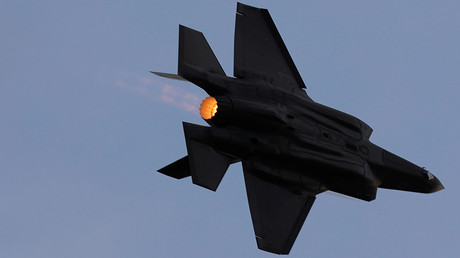US military grounds its entire fleet of F-35 fighter jets in the wake of South Carolina crash
The entire fleet of F-35 fighter jets has been grounded to inspect the aircraft for suspected faulty fuel tubes, the US military said. The decision comes in the wake of a Marine Corps’ F-35B crash in South Carolina last month.
The grounding order affects all variants of the advanced fighter jets, including the Air Force’s F-35A and the Navy’s F-35C. The engines of the aircraft will be checked for suspected faulty tubes and replacements made where necessary.
The military say that the inspection process is expected to take up to 48 hours.
The decision comes amid the investigation into the September 28 crash, which happened after the F-35B’s take-off from an air station in Beaufort.
“The primary goal following any mishap is the prevention of future incidents,” said Joe DellaVedova, a spokesman with the Pentagon’s Joint Program Office, which oversees the F-35. “We will take every measure to ensure safe operations while we deliver, sustain and modernize the F-35 for the warfighter and our defense partners.”
Foreign operators of the F-35, such as Britain or Israel, are also grounding their fighter jets for inspection, according to the JPO statement.
The South Carolina crash – the first ever for the 5th-generation plane – ironically happened just a day after an F-35B successfully completed a mission in Afghanistan, an event that was reported by the Pentagon as a major milestone for the program. Luckily, the pilot of the crashed aircraft ejected and landed safely.
Problems have been surrounding the expensive Lockheed Martin-produced aircraft for years. Touted as an unprecedentedly advanced fighting machine, combining stealth capabilities with vast sensor dataflow and integration with other weapon systems, it has notorious for being riddled with hundreds of “deficiencies,” even as the aircraft was drawing closer to going into full-scale production. Those include dozens of serious drawbacks that could potentially be life-threatening.
The issues partially stem from the decision to design three different variants for different branches of the armed forces. The program is estimated to have a lifetime cost of over $1.5 trillion.



0 Comments:
Post a Comment
Subscribe to Post Comments [Atom]
<< Home